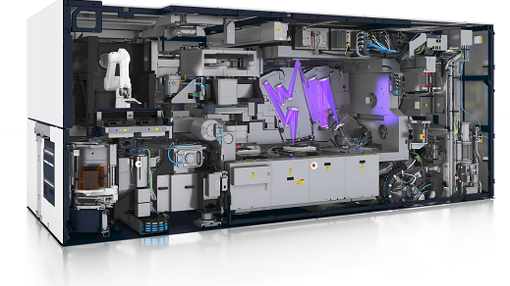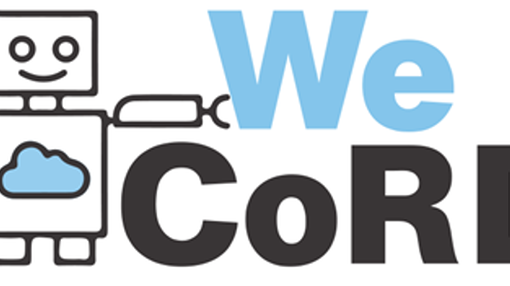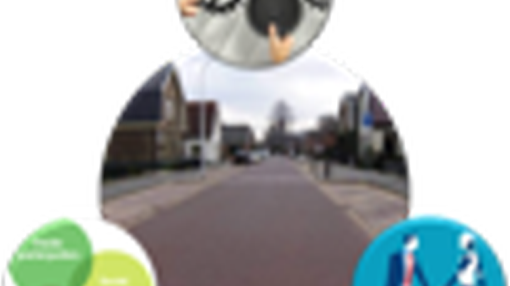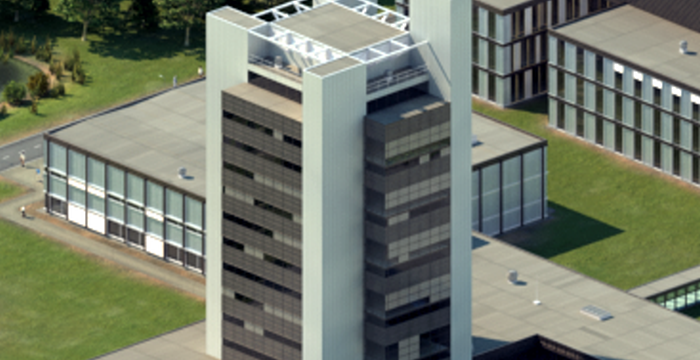My name is Kostas Nizamis, born in 1988 in Kavala, Greece. I am since 2019 an Assistant Professor in Multidisciplinary Design at the Design, Production, & Management (DPM) department at the University of Twente. My educational background includes a Master of Engineering in Electrical and Computer Engineering from Democritus University of Thrace in Xanthi, Greece, followed by a Master of Science in Biomedical Engineering from the University of Twente. I completed my Ph.D. research in Biomechanical Engineering at the same institution.
Through my work, I strive to contribute to advancing knowledge and practice in Systems Engineering, with a focus on multidisciplinary technical communication, to aid the development of innovative solutions that positively impact society.
I am currently the Director of Transfer for the Non-Profit Organization Authentia (If interested visit our website or our pages on Facebook and LinkedIn!).
Expertise
Computer Science
- Robotics
- Control
- Case Study
- Design
Medicine and Dentistry
- Duchenne Muscular Dystrophy
- Apoplexy
- Wrist
- Spinal Cord Injury
Organisations
My research is centered around the application of Systems Engineering (SE) principles, tools, and methodologies across diverse domains, with a particular focus on multidisciplinary projects. These projects encompass a wide spectrum, ranging from the rehabilitation of individuals with impairments to decision-making processes in the high-tech industry, and the effective deployment of industrial robotic automation in various sectors such as cleaning and manufacturing. The intersecting domains of robotic systems and automation, healthcare systems, and high-tech systems serve as the primary focal points of my research vision. By integrating SE practices into these areas, I aim to address complex challenges and drive innovation in the design and implementation of advanced systems, to Improve Multidisciplinary Communication in Systems Design
Publications
2025
2024
2023
Research profiles
I want to connect different fields of science and improve communication between disciplines through education. I am passionate about education, as I love teaching both university students and lifelong learners. Being involved in novel educational programs, allowed me to teach students from all the programs offered by UT. My collaboration with the industry in creating Continuous Professional Development (CPD) programs also fosters that vision. This way we design and learn together by working on authentic challenges within a multidisciplinary context!
I am the coordinator of the HTHT Minor Science 2 Society where I apply Challenge-Base Learning principles to facilitate interdisciplinary learning (https://www.utwente.nl/en/education/electives/minor/offer/htht-minors/#htht-%E2%80%93-minor-packages-215-ec).
Additionally, I am teaching systems engineering for Mechanical engineering bachelor students as well as professionals in the Industry.
I am also serving as the secretary of the Programme Committee for the BSc. and MSc. of Industrial Design Engineering (more information here).
Affiliated study programs
Courses academic year 2025/2026
Courses in the current academic year are added at the moment they are finalised in the Osiris system. Therefore it is possible that the list is not yet complete for the whole academic year.
- 202000023 - SEM 4 Systems Engineering
- 202000226 - Scientific Challenges IDE
- 202000230 - Minor: From Idea to Prototype
- 202000234 - Minor: From Prototype to Society
- 202000250 - Internship
- 202400016 - Minor: Humanitarian Engineering
- 202400593 - Leading Systemic Change
- 202500484 - Humanitarian Engineering for Inclusive a
Courses academic year 2024/2025
I participate in multiple projects spanning the domains of robotic systems and automation, healthcare systems, and high-tech systems.
Current projects

SPLASH
Systems and Portfolio development and Architecting using Systems engineering by Humans
Semiconductor devices are advancing rapidly in three aspects: miniaturization of components, device innovations, and material innovations. These advancements result in increasing demands on semi-conductor equipment, putting pressure on, and complicating the equipment development and production processes. Besides, fierce competition in the semiconductor market makes reliability, productivity, cost, and time to market the equipment crucial. In this research project, ASML and the UT will research how to factor in these aspects while increasing the state-of-the-art performance of the equipment, using a systems engineering approach on a technological and organizational level.
Freehabilitation
Smart Tools for Facilitating Seamless at Home Hand Rehabilitation
Individuals with hand impairments, such as chronic stroke patients, struggle with daily tasks due to their limited hand therapy engagement. Despite recommendations of 30 min/day training, most patients only achieve 15 min/day. Earlier, collaborating with clinicians and stroke patients, we have innovatively integrated hand exercises into everyday objects like toothbrushes and coffee cups for seamless at-home rehabilitation. In this project, we will take these efforts one step further and evaluate if and how this approach significantly increases training time compared to traditional methods.
Finished projects

Symbionics 1.3
Intention Amplifying in Hand Orthoses
SYMBIONICS The objective of the Symbionics program is to create systems that co adapt automatically, either intrinsically by design, by control, or a combination of both. Moreover, it is of great importance that any wearable orthosis should be inconspicuous, in order enhance social acceptance We intend to develop an intuitive hand orthosis for active hand support for people with Duchenne Muscular Dystrophy (DMD).

Flextension A-Gear
Flextension is an initiative of the Dutch Duchenne Parent Project. The Flextension initiative was started in 2007, as response to the demand from the Duchenne community to find technological solutions for boys and young men with Duchenne muscular dystrophy to improve their quality of life. The board of the foundation consists of volunteers who are active in the Duchenne community and volunteers working in different universities. The purpose of the Flextension Foundation is developing new tools that improve the quality of life of boys and young men with Duchenne. In the past seven years, the Flextension Foundation became an organization that has initiated numerous research projects with more than 40 partners in several countries.

WeCord
Open Educational Resources on Enabling Technologies in Wearable and Collaborative Robotics
Open Educational Resources on Enabling Technologies in Wearable and Collaborative Robotics (WeCoRD) project will establish a strategic partnership for modernising postgraduate and continuous professional education in the field of robotics, making it more relevant to the users, labour market and industry needs, boosting skills and employability of learners.

CHEtGUM
Human-machine cooperation and societal impact in the development of a chewing gum removal robot
Chewing gum removal from public places is a labor-intensive and costly task, creating the demand for a responsible way of cleaning and keeping public spaces clean. Our goal is to develop a cleaning robot, by the integration of mechatronics, with a responsible design, aware of its social impact, and finally, the symbiosis of automation and human supervision.
OSCAR
Design of an Office Space Cleaner Assisting Robot
Cleaning has a high physical and cognitive load for the cleaner. Also, the cleaning sector is increasingly confronted with new technologies that might have unforeseen consequences – especially robotics. On the one hand, robotics can be seen as a threat when the robot replaces the human being, on the other hand, there are also opportunities if a robot supports the cleaner, for instance when the cleaner gets older. Moreover, robotics offers possibilities to create space for work that cannot be done now. The central challenge for the responsible development and implementation of robots is to realize a concrete robotic cleaning system by means of an iterative design process to develop the current first idea into a concrete prototype.
Welcome to my media appearances page.
Here, you can explore my contributions to various media outlets, including interviews, podcasts, and discussions on topics within my field of expertise. This page serves as a resource for accessing my insights and perspectives shared in the public domain.
For any media inquiries or further information, feel free to contact me directly.
In the press
- Interview about the ending of Symbionics Project and future directions (https://www.imdi-sprint.nl/wp-content/uploads/2018/11/SPRINT-newsletter-46-november-2018-NED..pdf)
- Invited talk on Challenge-Based Learning at UT: Challenge-based education at the University of Twente – interdisciplinarity at work (https://www.4tu.nl/cee/events/webinar-series-challenge-based-education-at-ut/).
- Interview (from the 14:00 minute and on) on handling research data after concluding the research, by the Digital Competence Center (DCC): https://community.data.4tu.nl/2021/06/17/what-to-do-with-the-data-after-your-research/
- Web series about ECIU University - Episode 1
- The first and the second part of the story of bringing Authentia Foundation to life
- A wonderful story about how we turn daily objects into tools for hand rehabilitation after stroke!
- Freehabilitation: A new way to heal at home!
- Freehabilitation: A toolkit for Improving Hand Functions through Activities of Daily Living (Dutch Design Week - 4TU Design United Expo)
Address

University of Twente
Horst Complex (building no. 20), room W224
De Horst 2
7522 LW Enschede
Netherlands
University of Twente
Horst Complex W224
P.O. Box 217
7500 AE Enschede
Netherlands